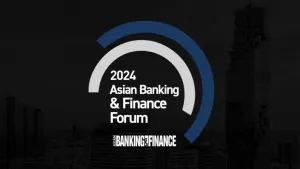
Australia's four major banks face rising risks in commercial real estate
Blame it on higher office vacancy rates and settlement risks.
Moody's Investors Service says that higher vacancy rates from an increase in supply of, and weak demand for, office properties and, growing settlement risk from potential oversupply of newly-built residential apartments in Australia's commercial real estate (CRE) sector is posing rising but still manageable risks for the country's four major banks.
The four banks are Australia and New Zealand Banking Group, Commonwealth Bank of Australia, National Australia Bank Limited and Westpac Banking Corporation, and are all rated Aa2/Aa2 negative, a1.
Here's more from Moody's:
"Australia's major banks have been growing their CRE exposures modestly in recent years, and are thus vulnerable to the risks from higher office vacancy rates in Brisbane and Perth and settlement risks from a potential residential apartment oversupply in Sydney, Melbourne and Brisbane," says Maadhavi Ramanayake, a Moody's Associate Analyst.
"These credit negative developments are somewhat mitigated by the banks' limited direct exposure to the higher risk CRE segments and by their tightened lending criteria," adds Ramanayake.
Moody's conclusions are contained in its just-released report "Banks -- Australia: Risks from Commercial Real Estate Are Rising but Remain Manageable."
According to the Moody's report, office vacancy rates have been rising in Perth and Brisbane as tenants from the resource and public sectors scale back their office space requirements, and as new supply in both areas becomes available. While demand in Brisbane is showing signs of recovery as the economy is improving, demand in Perth remains weak due to the contraction in resource-related service industries.
Meanwhile, Sydney, Melbourne and Brisbane are particularly exposed to a potential oversupply of residential apartment units due to new expected supply, against the backdrop of falling migration and tightened lending restrictions, particularly for foreign buyers who, to date, have comprised a large percentage of residential property investors.
This confluence of increased supply and tighter financial availability raises the risk of non-settlement, and could expose residential property developers to elevated levels of financial risk. Furthermore, it could depress overall market sentiment and put downward pressure on general house prices.
These developments are credit negative for Australian banks, which have increased their lending to the CRE sector by 1% to 4% each year between 2012 and September 2013, and by around 5% or more annually since December 2013 onwards.
Nevertheless, Moody's expects the risks from their CRE exposures will remain manageable for the banks.
First, the major banks' share of CRE loans -- as a percentage of total committed exposures -- was moderate at 6% to 8% as of 30 March 2016 for ANZ, NAB and WBC and 30 June 2016 for CBA, below the pre-crisis level of around 10%. Furthermore, the current weakness in the office market remains limited to select regions.
Second, Australia's major banks have tightened their lending criteria to the CRE sector following material losses in the aftermath of the global financial crisis. As a result, Moody's sees foreign bank branches as more exposed to the current headwinds in the segment, and expects the major banks' CRE impairments to remain at low levels.
Moody's stress tests show that, even in a scenario of isolated severe stress on the commercial property property and related loans, the major banks will only suffer a mild deterioration in their Common Equity Tier 1 ratios.













 Advertise
Advertise










